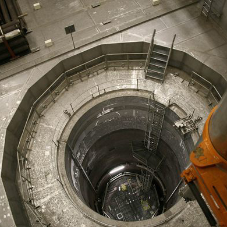Having selected the topic for your CPD, ensure the content reflects your product specifications.
Construction product manufacturers spend a lot of time, energy and money developing their CPD with the top-level business objective being to secure product specifications. However, fundamental to achieving this objective is ensuring that the messages being delivered in the CPD meet the objectives of the recipient - in this case the specifier.
It is important to look at what architects and specifiers looks for in a CPD and tailor your content appropriately. CPD is taken seriously, and it is often planned to discover more about new technologies, industry standard changes, be informed about products that will be appearing on upcoming projects and to meet wider ranging objectives for the practice such as sustainability targets. Often the practice wants to form a relationship with the product manufacturer to support them on projects, and you could view the CPD seminar as an interview of your sales/specification person to become their chosen Trusted Advisor for a given range of products.
When working with a client to develop CPD, we like to start by getting the sales and marketing teams together and discussing the product features the sales team promote, particularly any USPs that your product offers. Even small features can make a big difference. Sometimes they are so familiar to your organisation that they can be overlooked, but for the specifier they could tip the decision in the favour of your product.
If you are planning to create different CPD content for each target specifier group, the features and USPs can be ranked differently depending on how important they are to that group. Each one of these USPs needs to be set out and the benefits explained. This in turn shows the specifier why that clause is included in the product specification and the importance of retaining it. It might be the raw material, the manufacturing process, an independent product test or even installer training. All are important to the final installation and if the specifier understands the purpose, they are likely to include it in their check-list when deciding if an alternative product is ‘equal’.
An important feature of a CPD is that it is not a sales document. This is a requirement of certification bodies like RIBA, but it also makes good sense. Architects and Engineers want to learn about products and systems within the context of an application. Not to have a sales brochure presented to them. So great care and consideration should be given to how product features are presented and explained.
Typically, the content should explain the design considerations for the relevant applications, legislation that applies, potential pitfalls and causes of failure. All of which logically lead back to the reason why clauses are included in the product specification.
As with any other marketing communication the CPD should finish with a call to action. Invariably this will be to discuss current projects, but it should also be to introduce the standard product specification to the practice. These can then be copied and pasted into their future projects or be available in their chosen specification software. And a sales teams key performance indicator should include the number of specifications adopted.
CPD is being transformed through the pandemic and digitisation of the construction industry, in terms of types of CPD material required and the format of delivery. However, the underlying aim of securing product specification remains the same and having accurate, detailed product specifications available and aligned with your CPD programme are key success factors.
Further Information
Chris Ashworth is founder of Competitive Advantage Consultancy which specialises in helping building product manufacturers to be more effective at getting their products selected. Services include bespoke market research, learning and development programmes a range of sales and marketing tools and consultancy to help implement change.
Competitive Advantage work with clients to help them develop effective CPD programmes.
Sign up to the Competitive Advantage newsletter for an overview of construction market activity as well as construction sales and marketing advice.
Related Blog Articles



crop192.png)












